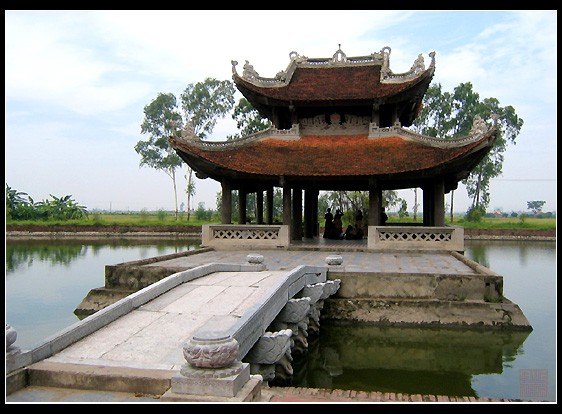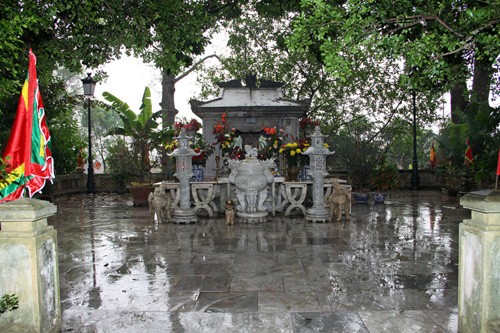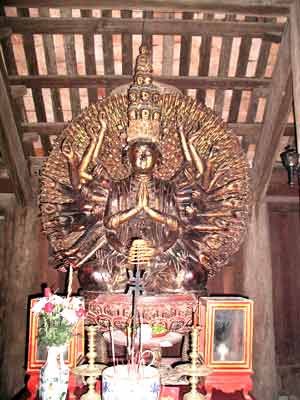(VOVworld)- Bac Ninh province is often referred to as the Kinh Bac- Northern region. The name is associated with a land with a long history and ancient culture. Previously, Kinh Bac consisted of Bac Giang province and Dong Anh and Long Bien districts of Hanoi. The region is associated with several legends and is considered the cradle of the great Viet civilization.

Do temple in Bac Ninh |
Located in the center of the Red River Delta, Kinh Bac is blessed with fertile land, beautiful landscapes and favorable conditions for economic and cultural exchanges with other localities throughout the country.
Since the early years before Christ, the region was one of the cradles of the wet rice civilization and the founding place of the Great Viet civilization. It is home to several relics, pagodas, towers, temples and stupas which were built under several feudal regimes. Kinh Bac is also famous nationwide for its folk festivals, especially Quan Ho folk singing, which was recognized by UNESCO as an intangible cultural heritage of humanity.
Kinh Bac inspires visitors with its cultural and historical vestiges. Dinh Bang village in Tu Son district is home to the stupas of 8 Kings of the Ly dynasties, Co Phap temple and Do temple, which worships 8 Kings of the Ly Dynasty from the 11th to the 13th century.
Nguyen Thac Kim is from the Management Board of Do Temple Relic: “The Ly dynasty built a unified monarchy, a unified country, and a unified government. The Le dynasty also set up social, economic and cultural establishments contributing to the development of Vietnamese culture and civilization and the army. During peacetime, people cultivated crops. In wartime, they served as soldiers. With such policies, the Ly dynasty developed a strong economy and successfully defended the nation”.

King Duong Vuong stupa in Bac Ninh
King Duong Vuong’s stupa and the Temple of Lac Long Quan and Au Co in A Lu village, Thuan Thanh district are also popular destinations. The Luy Lau ancient citadel with market streets, temples and tower pagodas shows that this area used to be a political, economic, trade, Buddhism and Confucianism center of Vietnam.

But Thap pagoda |
Thuan Thanh is also the home of various traditional crafts and folk arts such as the folk paintings of Dong Ho village, the Ca Tru singing of Thanh Tuong village, and water puppetry of Bui Xa village. There are many relics in Thuan Thanh that are closely associated with the history and development of Buddhism in Vietnam including Dau pagoda and But Thap pagoda, which has several Buddha statues and valuable antiques reflecting Vietnamese people’s creativity in architecture and sculpture. Nguyen Huu Nam is a cultural officer in Thuan Thanh
:“But Thap is one of Bac Ninh’s most ancient pagodas. There are several architectural structures and sculptured works typical of the 17th century in the pagoda. They include the wooden statue of Bodhisattva Kuan-yin of a thousand eyes and hands and Bao Nghiem stone-sculpture tower, known as Pen Tower. But Thap pagoda is one of the few that retains its ancient style.

The wooden statue of Bodhisattva Kuan-yin of a thousand eyes and hands in But Thap pagoda |
Kinh Bac was the center of national defense and cultural development during Vietnam’s feudal regimes. There is also the Bac Ninh Temple of Literature which honors more than 600 laureates of Bac Ninh, one third of the laureates nationwide under the feudal regimes. Kinh Bac civilization is also reflected in the tradition, customs and lifestyle of the local people.